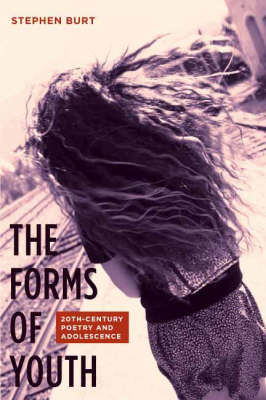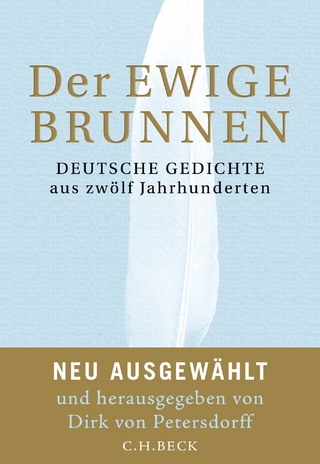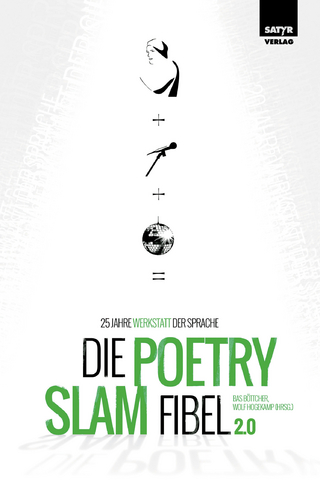
The Forms of Youth
Columbia University Press (Verlag)
978-0-231-14142-0 (ISBN)
Early in the twentieth century, Americans and other English-speaking nations began to regard adolescence as a separate phase of life. Associated with uncertainty, inwardness, instability, and sexual energy, adolescence acquired its own tastes, habits, subcultures, slang, economic interests, and art forms. This new idea of adolescence became the driving force behind some of the modern era's most original poetry. Stephen Burt demonstrates how adolescence supplied the inspiration, and at times the formal principles, on which many twentieth-century poets founded their works. William Carlos Williams and his contemporaries fashioned their American verse in response to the idealization of new kinds of youth in the 1910s and 1920s. W. H. Auden's early work, Philip Larkin's verse, Thom Gunn's transatlantic poetry, and Basil Bunting's late-modernist masterpiece, Briggflatts, all track the development of adolescence in Britain as it moved from the private space of elite schools to the urban public space of sixties subcultures.
The diversity of American poetry from the Second World War to the end of the sixties illuminates poets' reactions to the idea that teenagers, juvenile delinquents, hippies, and student radicals might, for better or worse, transform the nation. George Oppen, Gwendolyn Brooks, and Robert Lowell in particular built and rebuilt their sixties styles in reaction to changing concepts of youth. Contemporary poets continue to fashion new ideas of youth. Laura Kasischke and Jorie Graham focus on the discoveries of a specifically female adolescence. The Irish poet Paul Muldoon and the Australian poet John Tranter use teenage perspectives to represent a postmodernist uncertainty. Other poets have rejected traditional and modern ideas of adolescence, preferring instead to view this age as a reflection of the uncertainties and restricted tastes of the way we live now. The first comprehensive study of adolescence in twentieth-century poetry, The Forms of Youth recasts the history of how English-speaking cultures began to view this phase of life as a valuable state of consciousness, if not the very essence of a Western identity.
Stephen Burt teaches in the English Department at Harvard University. From 2000 to 2007 he taught at Macalester College in St. Paul, Minnesota. He is the author of the critical study Randall Jarrell and His Age and the editor of Randall Jarrell on W. H. Auden, both published by Columbia University Press, and the author of three books of poems, including Parallel Play. His essays and articles on modern and contemporary poetry have appeared in many journals in America, Britain, and elsewhere, among them American Literary History, Boston Review, London Review of Books, the New York Times Book Review, the Times Literary Supplement, and the Yale Review. A collection of those essays and reviews will be published in 2009.
Introduction 1. Modernist Poetics of Adolescence 2. From Schools to Subcultures: Adolescence in Modern British Poetry 3. Soldiers, Babysitters, Delinquents, and Mutants: Adolescence in Midcentury American Poetry 4. Are You One of Those Girls? Feminist Poetics of Adolescence 5. An Excess of Dreamy Possibilities: Ireland and Australia 6. Midair: Adolescence in Contemporary American Poetry Notes Works Cited Acknowledgments Index
| Erscheint lt. Verlag | 4.9.2007 |
|---|---|
| Verlagsort | New York |
| Sprache | englisch |
| Maße | 152 x 229 mm |
| Themenwelt | Literatur ► Lyrik / Dramatik ► Lyrik / Gedichte |
| Geisteswissenschaften ► Sprach- / Literaturwissenschaft ► Anglistik / Amerikanistik | |
| Geisteswissenschaften ► Sprach- / Literaturwissenschaft ► Literaturwissenschaft | |
| ISBN-10 | 0-231-14142-4 / 0231141424 |
| ISBN-13 | 978-0-231-14142-0 / 9780231141420 |
| Zustand | Neuware |
| Informationen gemäß Produktsicherheitsverordnung (GPSR) | |
| Haben Sie eine Frage zum Produkt? |
aus dem Bereich


